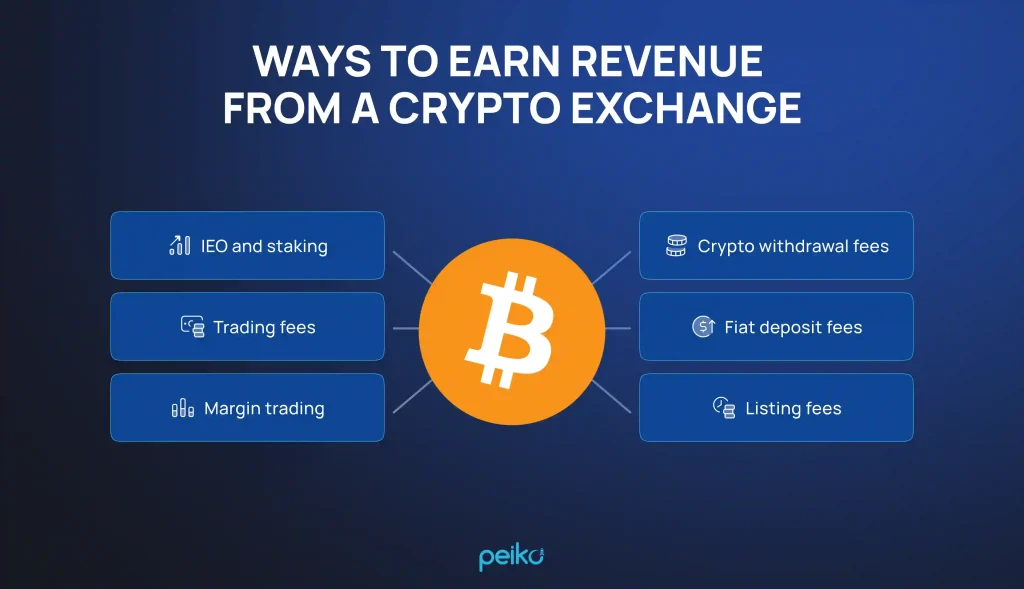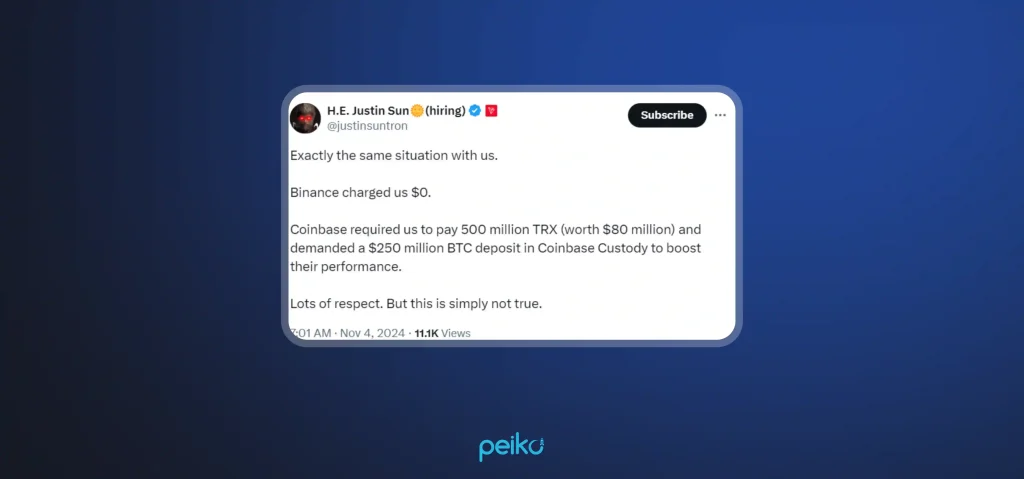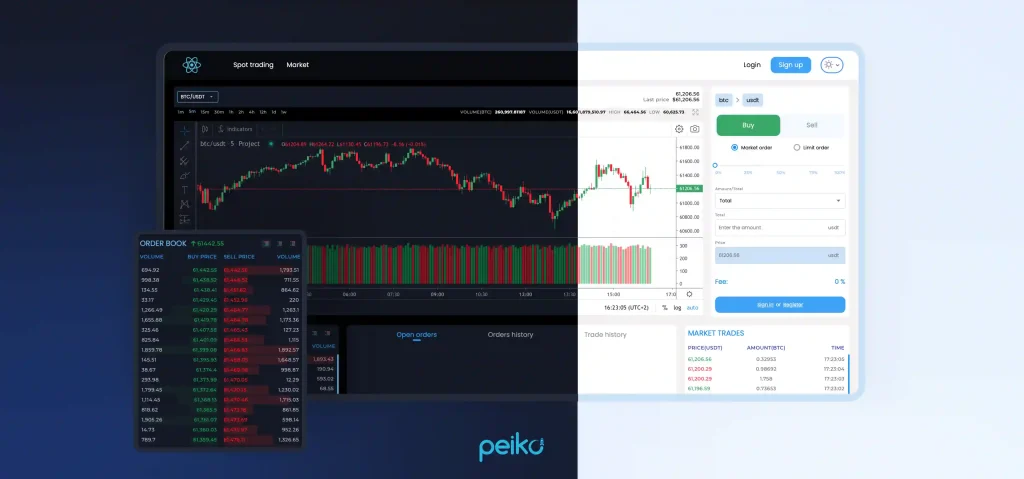Developing your own cryptocurrency or token is the first step. Then the owner of the token or cryptocurrency looks for an exchange to list it on for sale and to reach a wide audience of investors. However, listing on an exchange entails commissions for the project. The cost to start a crypto exchange listing may range $5,000 on smaller exchanges to $500,000+ on reputable platforms such as Binance. That is, it should be a clearly calculated strategic step.
In this article, we will talk in detail about the fees for listing on a crypto exchange — from the actual size of the fees and the conditions of placement. If you are a token or cryptocurrency creator, you will learn how to pick the right platform and avoid costly mistakes. If you plan to develop your own exchange, then you will learn how exchanges benefit from listing such projects.
What are crypto exchange listing fees?
Cryptocurrency exchange listing fees are the costs that token projects incur to list their coin or token on a crypto exchange and make it available for trading.
The listing fee typically encompasses a range of services such as:
- Technical integration of the token onto the exchange platform
- Legal and compliance review
- Marketing and promotion (launch announcements, AMAs (ask me anything sessions), social media coverage)
- Market-making or liquidity support setup
- Constant maintenance and technical support
Listing fees serve a dual purpose: to cover the exchange’s operating costs and to ensure that serious, well-prepared projects are listed. Of course, fees can vary depending on the size of the crypto exchange, its reputation, and listing model, ranging from $5,000 on smaller exchanges to over $500,000 on larger platforms.
CEX vs DEX listing: Cost comparison
When a project is planning a token launch, they decide whether to list. There are two common types of crypto exchanges: centralized exchange (CEX) and a decentralized exchange (DEX).
Centralized exchanges
Typically, CEX platforms like Binance, Coinbase, or KuCoin charge expensive listing fees. But fees can vary based on the exchange’s size, or coin listing services offered.
| Exchange tier | Approx. listing fee |
| Tier 1 (Binance, Coinbase) | $250,000 –$1,000,000+ |
| Tier 2 (KuCoin, Gate.io) | $50,000 – $200,000 |
| Tier 3 (smaller exchanges) | $10,000 – $50,000 |
You may wonder why listings on CEXs like Binance or KuCoin are so expensive? Because it includes full technical integration, legal compliance checks, project audits, marketing support (interviews, press releases, social media promotion), as well as liquidity provision and market makers.
Pros of CEX listing:
- More exposure and trading volume
- Increased investor confidence
- Streamlined fiat access
Cons of CEX listing:
- Higher listing fee
- Stringent vetting process
- Long wait times for the coin listing on exchange
By the way, you can read more about Binance’s token listing process here.
Decentralized exchanges
DEX platforms like Uniswap, SushiSwap, and PancakeSwap offer permissionless listing, with no formal listing fee.
But placing a token on a DEX still comes with expenses — primarily to set up a liquidity pool, gas fees, and optional promotion or auditing services. Approximate cost to start a crypto exchange listing may range from $1,000 to $10,000.
Benefits of listing on DEXs:
- No listing fee required
- Decentralized and rapid process
- Complete control over listing
Cons of DEX listing:
- Less visibility unless heavily promoted
- Must provide and handle your own liquidity
- Low investor trust for unfamiliar tokens
Why listings matter for crypto exchanges
For crypto exchanges, token listings are a great way to make money. Each successful listing can introduce:
- New users Projects will direct their users to the exchange; the result is more signups and trading volume.
- Higher trading volumes More tokens mean more pairs, more trades, and more fee income.
- Listing fees Clean-cut revenue from projects, especially for tier-2 and tier-3 platforms.
- More brand awareness Listing popular coins or solid projects enhances the credibility of the exchange.
- Ecosystem growth and partnerships Partnership with new projects may lead to long-term integrations, exclusive features, or token adoption on the platform.
Quality listings are a win-win for exchanges: crypto exchange listings help to generate revenue, attract users, and boost platform credibility.

What’s included in a listing fee?
The listing fee should cover the costs of listing a new token or coin on a crypto exchange. This includes: tech integration (smart contract audit), testing the token’s compatibility with the exchange’s internal systems (crypto wallets, API, trading engine, and withdrawal mechanisms). In addition, the fee includes marketing costs to promote the listing.
And yes, exchanges can use the listing fee to fund ongoing project maintenance, customer support for questions related to the new token, and an audit for regulatory compliance.
Real examples of crypto exchange listing fees
Listing fees differ based on the exchange’s size, popularity, and market reach. It is true that most exchanges don’t publicly disclose their listing fee structures. However, some public statements provide insights about this.
It is rumored that the Binance exchange charges projects from $100,000 to $1 million to list popular tokens, because listing there means immediate access to a massive user base and trading volume.
Coinbase, like Binance and other reputable crypto exchanges, requires a rigorous review process and charges hefty fees, usually in the six-figure domain. Projects like TRON ($TRX) and Fantom have publicly stated they were asked for millions of dollars in marketing commitments or indirect fees. Coinbase has denied these allegations.

Smaller platforms like KuCoin or BitMart can charge a cost to list token on exchange anywhere from $10,000 to $50,000. Some decentralized exchanges don’t have listing fees but rather request liquidity provision or governance approval.
Hidden costs and extra requirements
Exchanges like to push for a flat listing fee, but projects end up paying 2-3 times that figure due to additional, not-so-obvious requirements. Each project owner should be aware of the following:
Liquidity commitments
The project may be required to lock a minimum amount of value of your token (e.g., $50k-$200k worth) or USDT/ETH in a market-making pool. Failing it, the project may end up with poor order book depth, even delisting.
Marketing packages (highly recommended)
Some exchanges add costly promotional coin listing services, such as:
- Press release distribution ($2k-$5k)
- App feature or homepage banner location ($5k-$20k)
- AMA or social media ad campaigns ($1k-$3k each)
Smart contract audits
If your token hasn’t been audited, exchanges will request one from a reputable auditor (CertiK, Hacken) which will cost $5k-$15k+.
Legal documentation
Mid- to top-end CEXs might engage you with procuring a legal opinion letter declaring your token is not a security. Prepare for legal fees of $3k to $10k, depending on where you are.
Post-listing support fees
Some exchanges will have recurring monthly or yearly support or maintenance fees, especially in Asia.
Token launch checklist before listing
Launching a token is a big step, but getting it listed on an exchange and making it accessible to a wider audience requires careful preparation. Below are the main points a project must complete before listing on any crypto exchange.
| Category | Item |
|---|---|
| Product / Technical Readiness |
|
| Tokenomics |
|
| Legal & Compliance |
|
| Community & Growth |
|
| Listing Preparation |
|
What makes an exchange attractive for token listings?
Do you already run a crypto exchange or plan to launch a new one? Solid crypto projects look beyond listing prices when choosing a platform.
Let’s consider what makes the crypto exchange attractive for listing.
- Listing process without hidden costs Clear criteria on coin listing on exchange, fair listing prices, and open communication create trust with investors and projects.
- Real user base and live trading volume Projects do their research. If your exchange is pumping volume or lacks active communities, strong projects simply won’t choose you.
- Security & compliance A secure exchange with strong KYC/AML processes and voluntary legal checks attracts better listings and partners.
- Marketing & launch support Adding co-marketing (banners, AMAs, push notifications) at launch will help your exchange stand out and drive engagement.
- Liquidity solutions Adding market-making support or exposure to liquidity providers helps tokens gain early traction and price stability.
- Technical reliability Fast matching engine, speedy APIs, and reliable uptime matter not just for your users, but also listing partners.
Build your custom crypto exchange with Peiko
Want to launch your own crypto exchange or are you preparing for a token placement? A smart strategy is the key to success. If you need a reliable and quick-to-launch platform, we are ready to offer a turnkey solution.
We will help you launch a fully operational white-label CEX in just 3 weeks with options to add tailored features by your request. You will receive a reliable, scalable platform with customized features, deep liquidity, and a high level of security.
What you get:
- A powerful trading engine (more than 10,000 operations per second)
- TradingView charts for convenient analysis
- Ready-made liquidity from major providers (Huobi, B2C2, and others)
- Protected architecture: Fireblocks, KYC/AML, two-factor authentication
- Convenient admin panel with full control over the platform
- Quick launch — much cheaper than developing an exchange from scratch
- Full rights to the code — easy to scale as the project grows
A platform that can be trusted builds user loyalty and attracts interest from strong projects.
With such an exchange, you can not only earn on listings, but also become a growth point for the ecosystem around your brand.
You do marketing for growth — we take care of the technology and infrastructure.

Final thoughts: Is it worth the investment?
A successful token listing is a matter of timing, preparation, and real support. Projects must have a working product, established tokenomics, and community demand. Exchanges, on their end, need robust infrastructure and list high-quality assets to build trust and ensure trading volume.
If you are planning to build a robust crypto exchange and then generate revenue by listing fees, we will help you create a crypto exchange with reliable infrastructure in a few weeks (with the option to add custom features upon request). Contact us today to get started!
FAQ
Apply through the exchange’s listing portal. Then, submit project details (whitepaper, tokenomics, team info, legal documents). Also, pay a listing fee if needed. On DEXs, in most cases, you can list directly by creating a liquidity pool and deploying your token smart contract.
The exchange token listing cost can range remarkably: from a couple of thousand dollars on smaller exchanges to over $1 million on high-end exchanges like Binance or Coinbase.
Yes, some exchanges can list tokens for free if they discover robust community demand, high use case, or backing from reputable investors. The majority of high-tier exchanges, however, require payment or a formal application.
Exchanges typically ask for your whitepaper, tokenomics, smart contract audit, legal opinion, founding team bios, and roadmap. Some will ask for a working product, user base metrics, or KYC/AML compliance details.
ICO and IDO are stages of the first token sale when a project invites investor capital. Listing occurs later when the token is already available to be traded. For example, after a successful ICO, the team might call for a listing on crypto exchange to make the token available for large-scale trading.









